Abstract
A series of experiments at several levels of relative humidity and radiation dose rates was carried out using spores of Bacillus subtilis var. niger to evaluate the effect of heat alone, radiation alone, and a combination of heat and radiation. Combined heat and radiation treatment of microorganisms yields a destruction rate greater than the additive rates of the independence agents. The synergistic mechanism shows a proportional dependency on radiation dose rate an Arrhenius dependency on temperature, and a dependency on relative humidity. Maximum synergism occurs under conditions where heat and radiation individually destroy microorganisms at approximately equal rates. Larger synergistic advantage is possible at low relative humidities rather than at high relative humidities.
Full text
PDF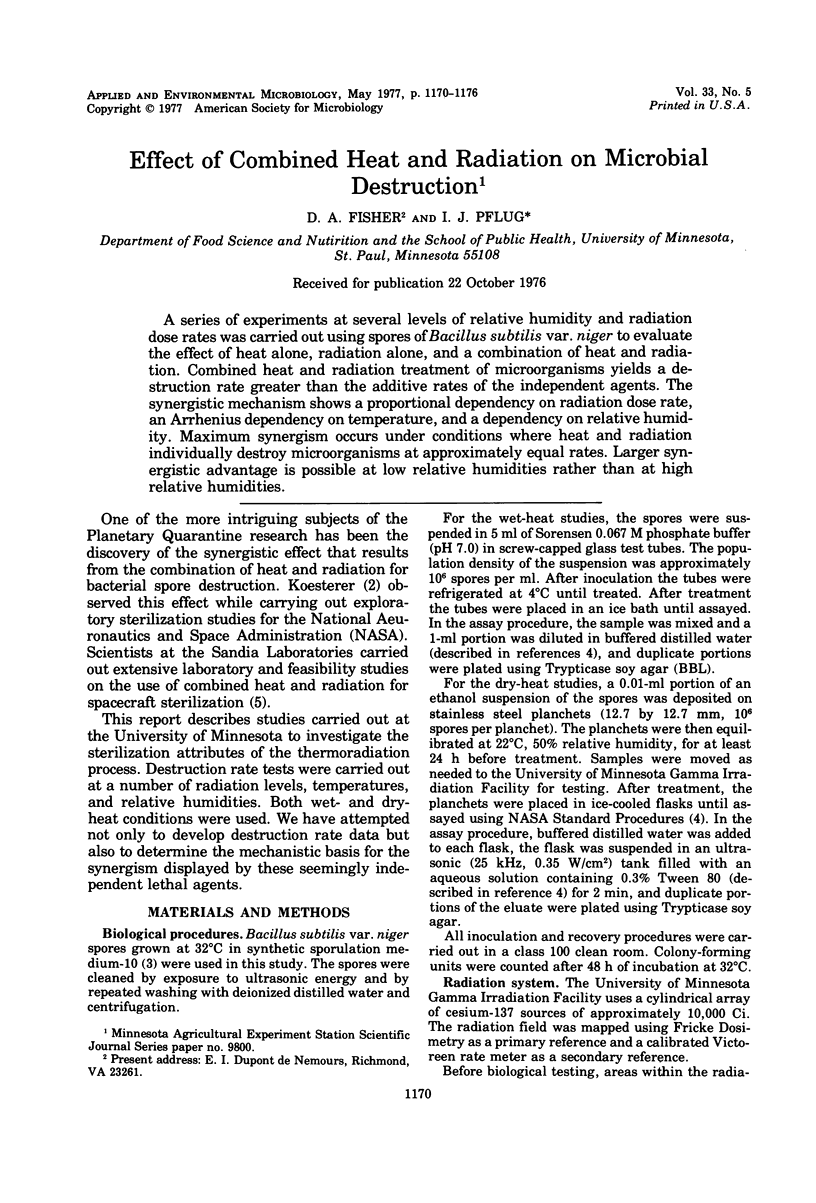
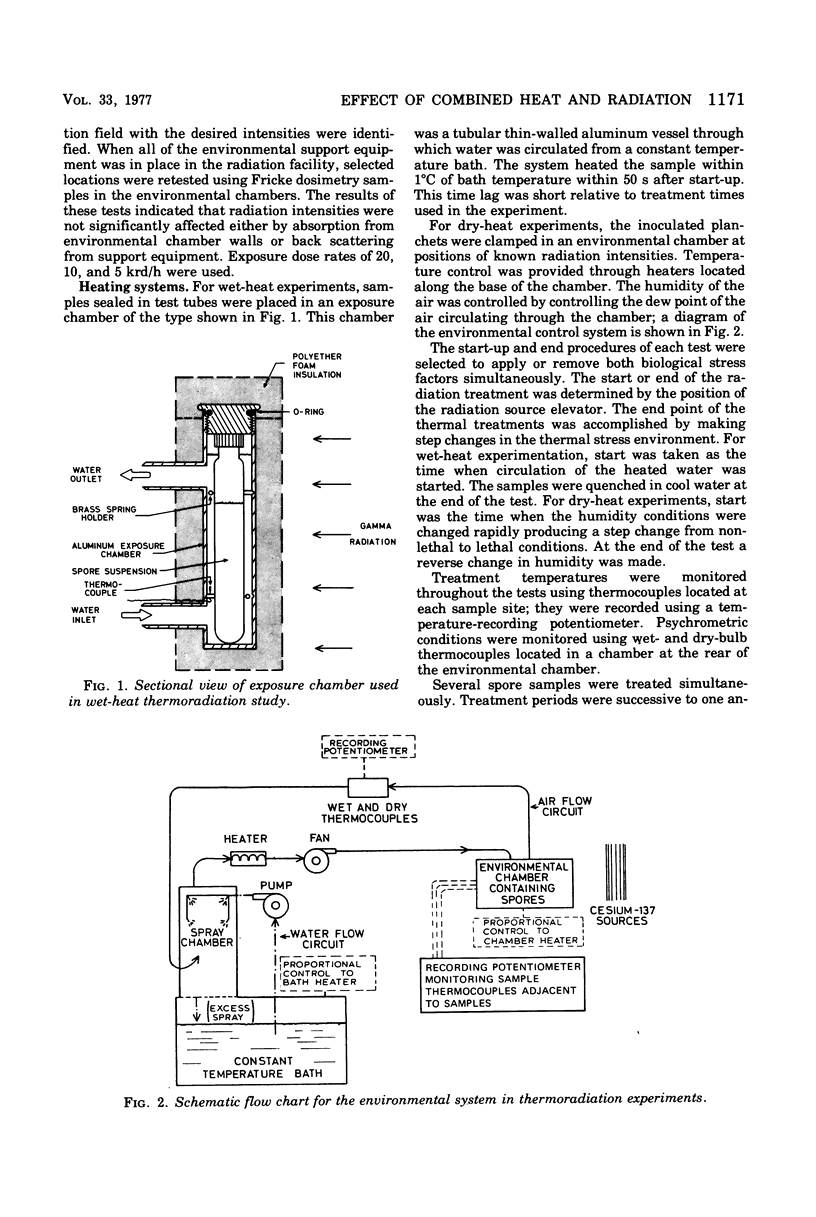
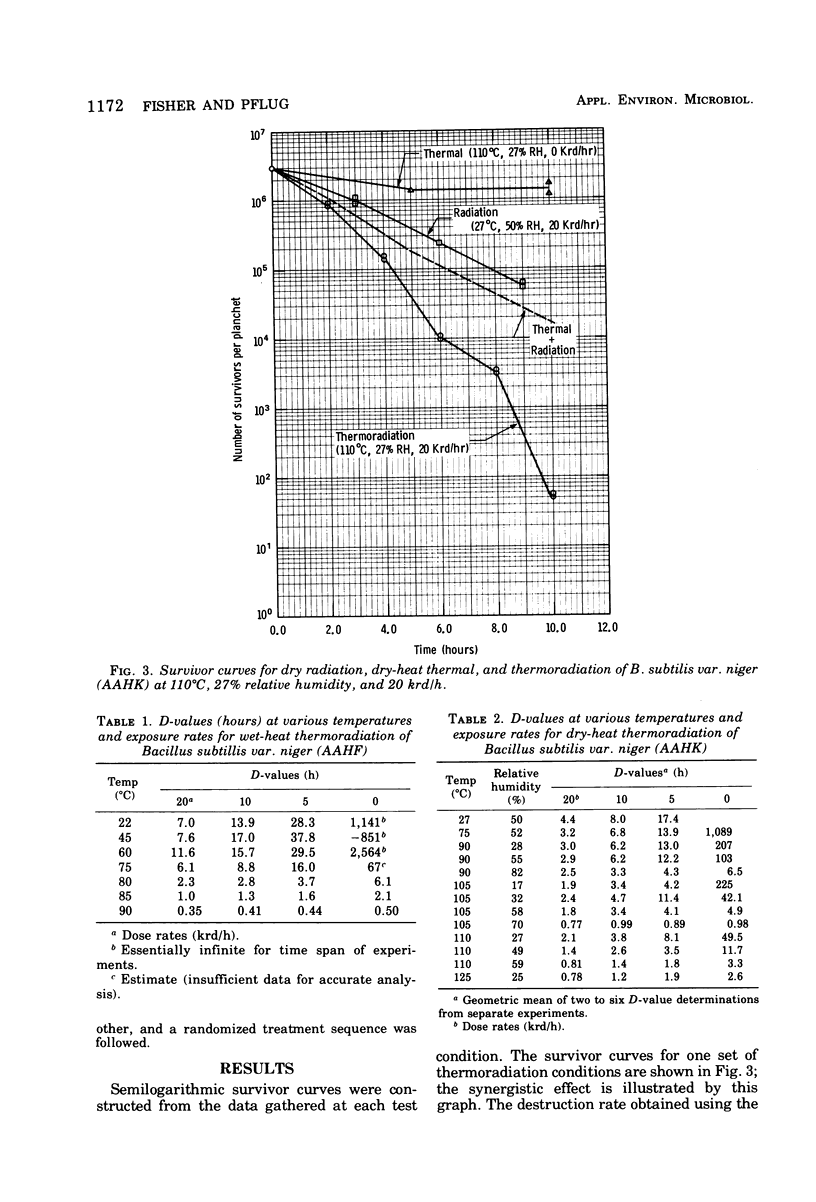
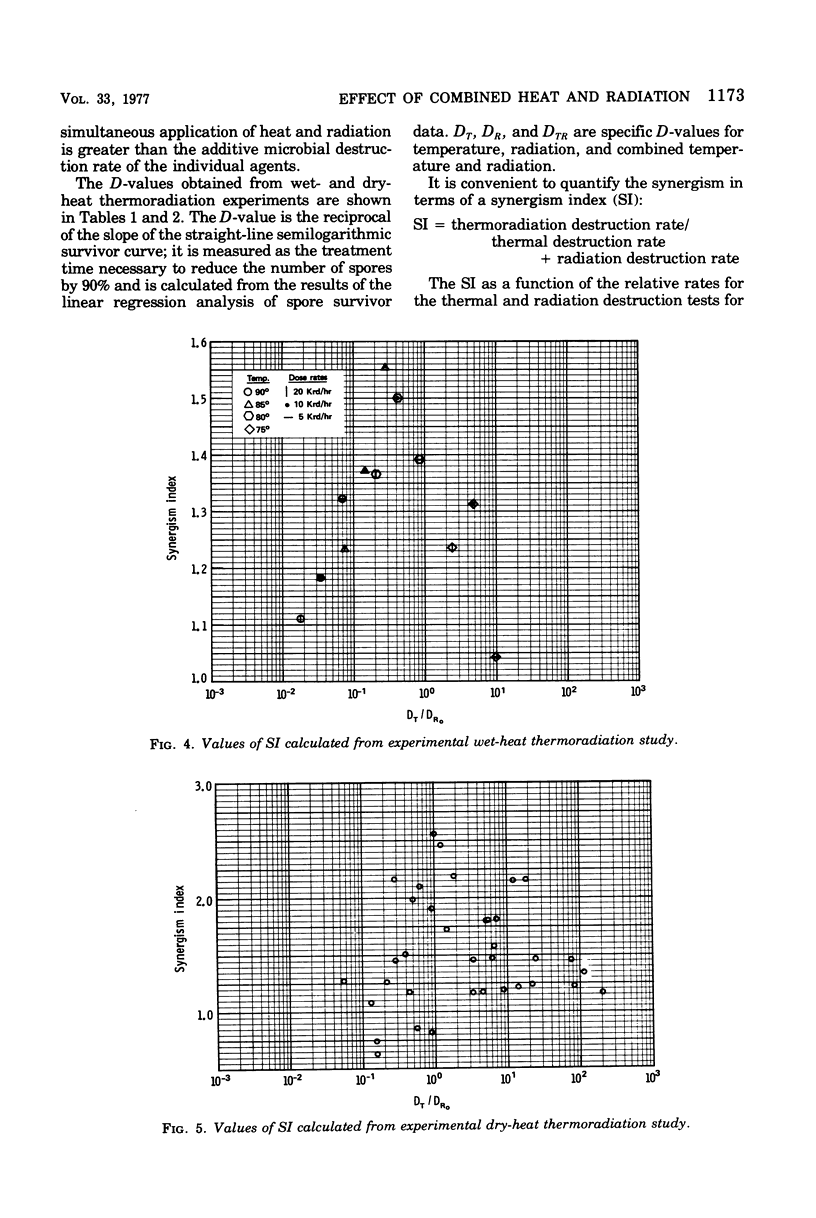
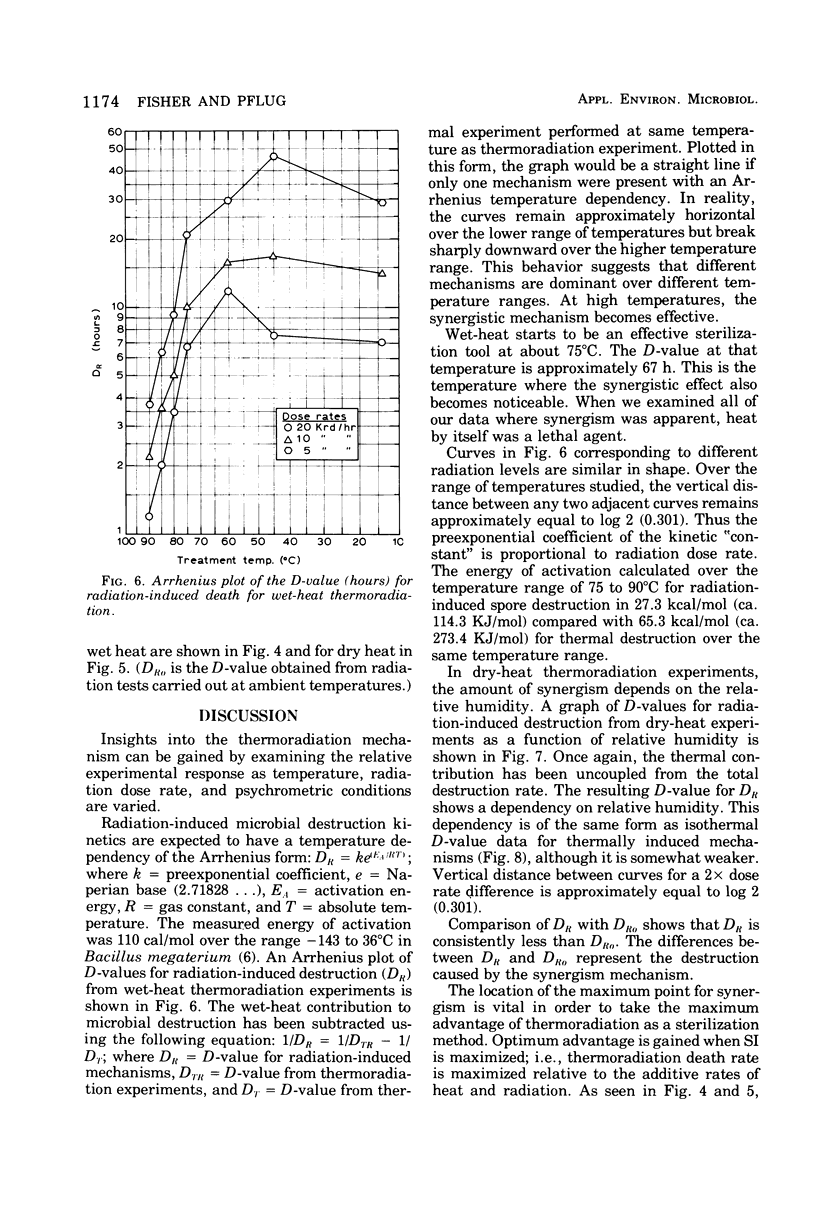
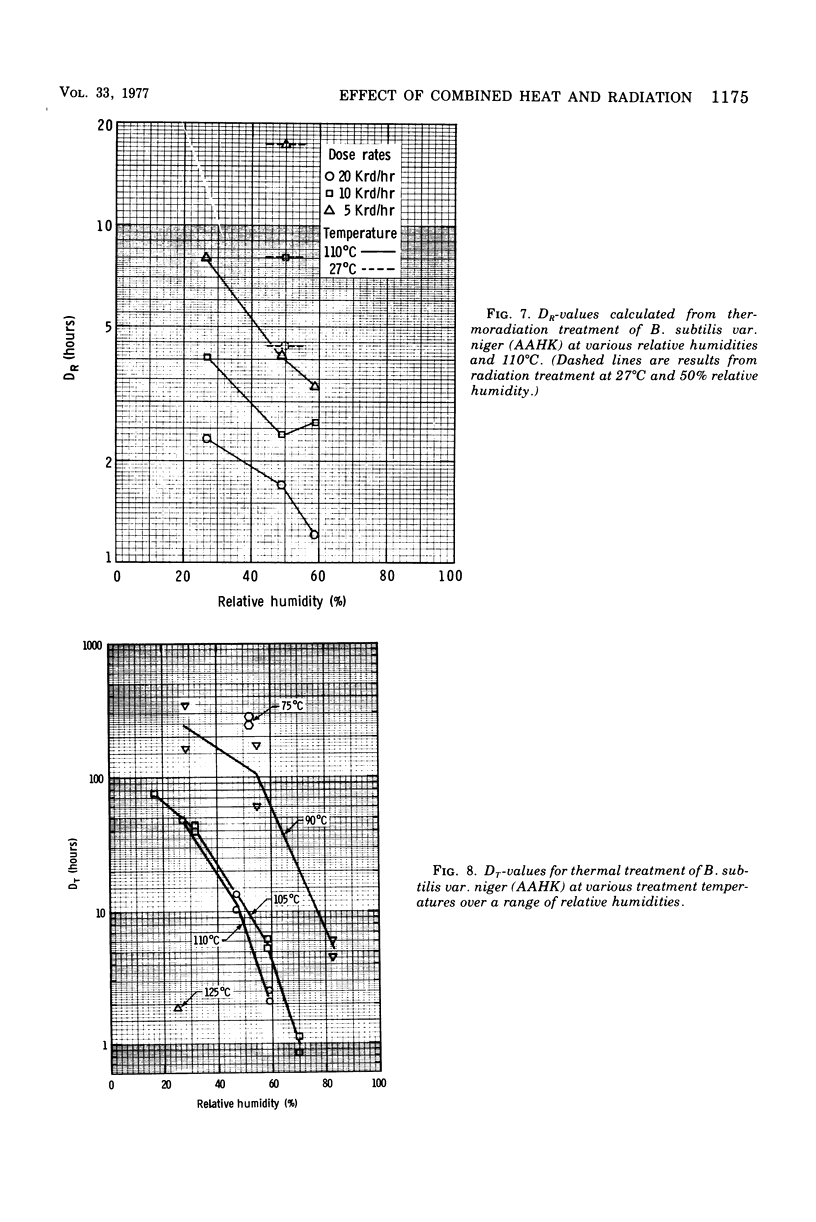
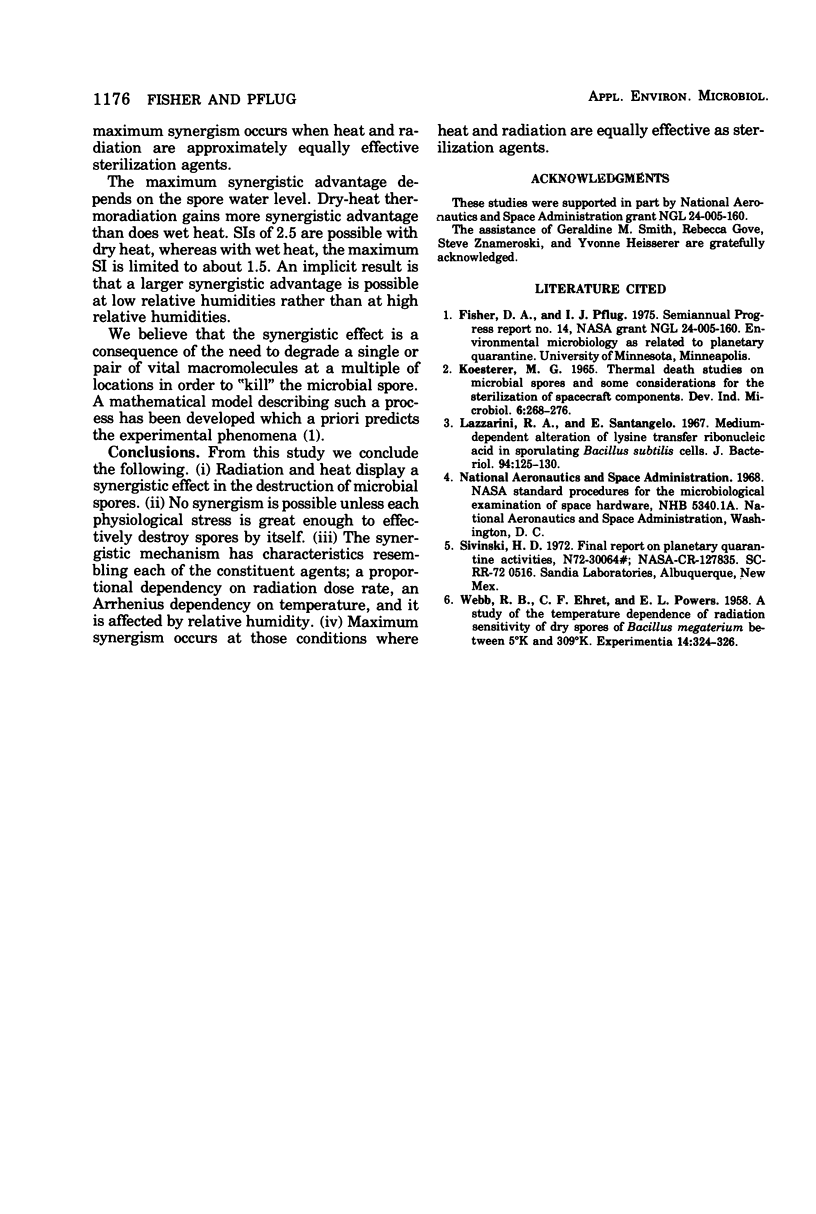
Selected References
These references are in PubMed. This may not be the complete list of references from this article.
- Lazzarini R. A., Santangelo E. Medium-dependent alteration of lysine transfer ribonucleic acid in sporulating Bacillus subtilis cells. J Bacteriol. 1967 Jul;94(1):125–130. doi: 10.1128/jb.94.1.125-130.1967. [DOI] [PMC free article] [PubMed] [Google Scholar]
- WEBB R. B., EHRET C. F., POWERS E. L. A study of the temperature dependence of radiation sensitivity of dry spores of Bacillus megaterium between 5 degrees K and 309 degrees K. Experientia. 1958 Sep 15;14(9):324–326. doi: 10.1007/BF02160387. [DOI] [PubMed] [Google Scholar]


